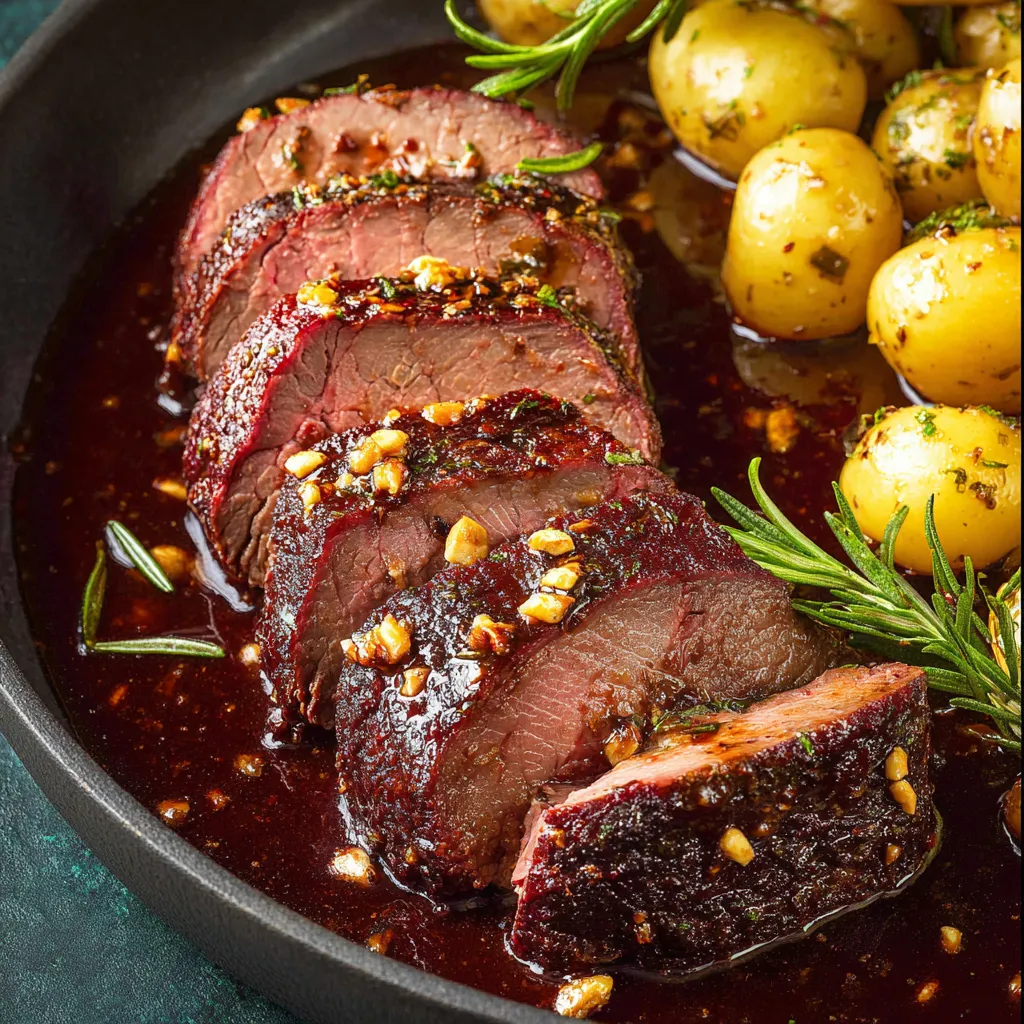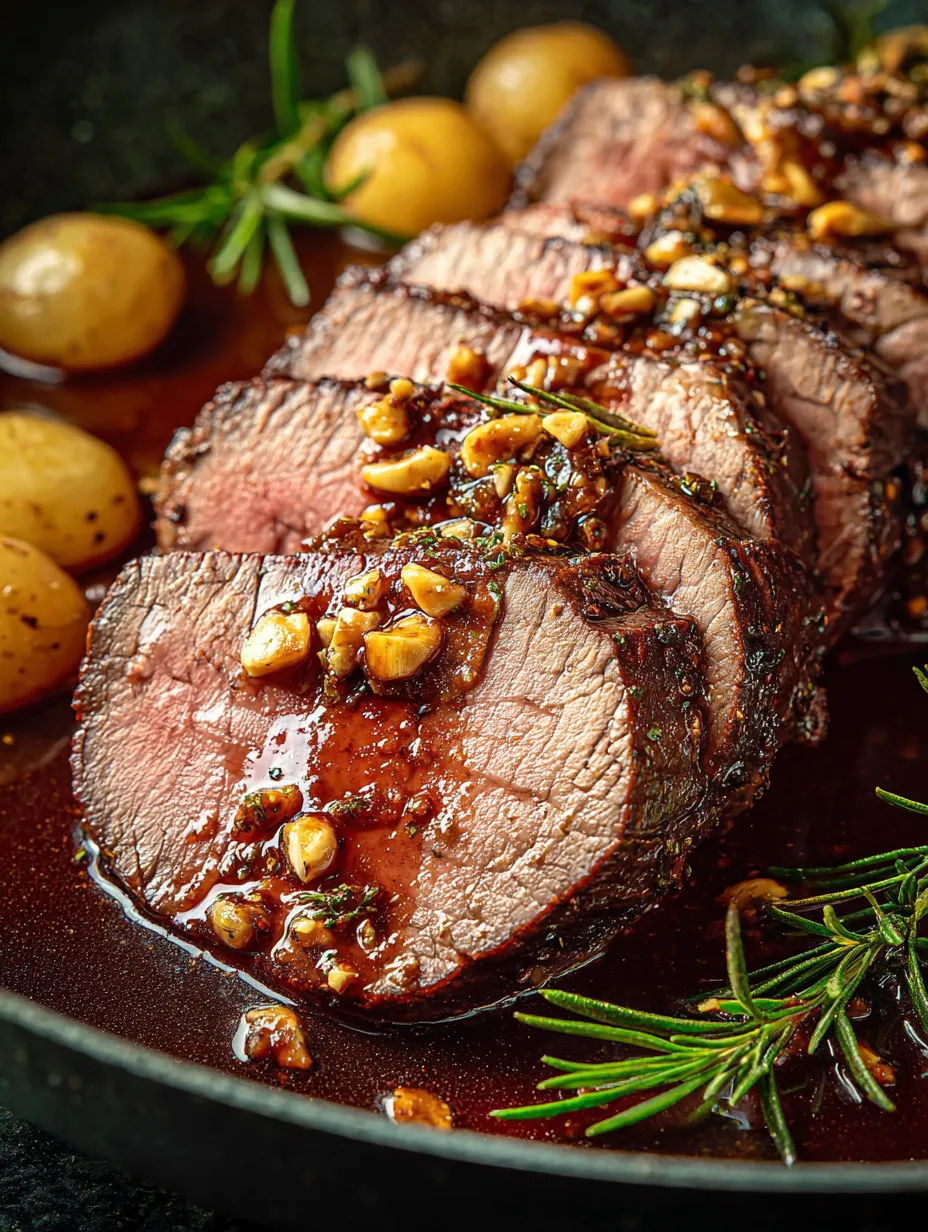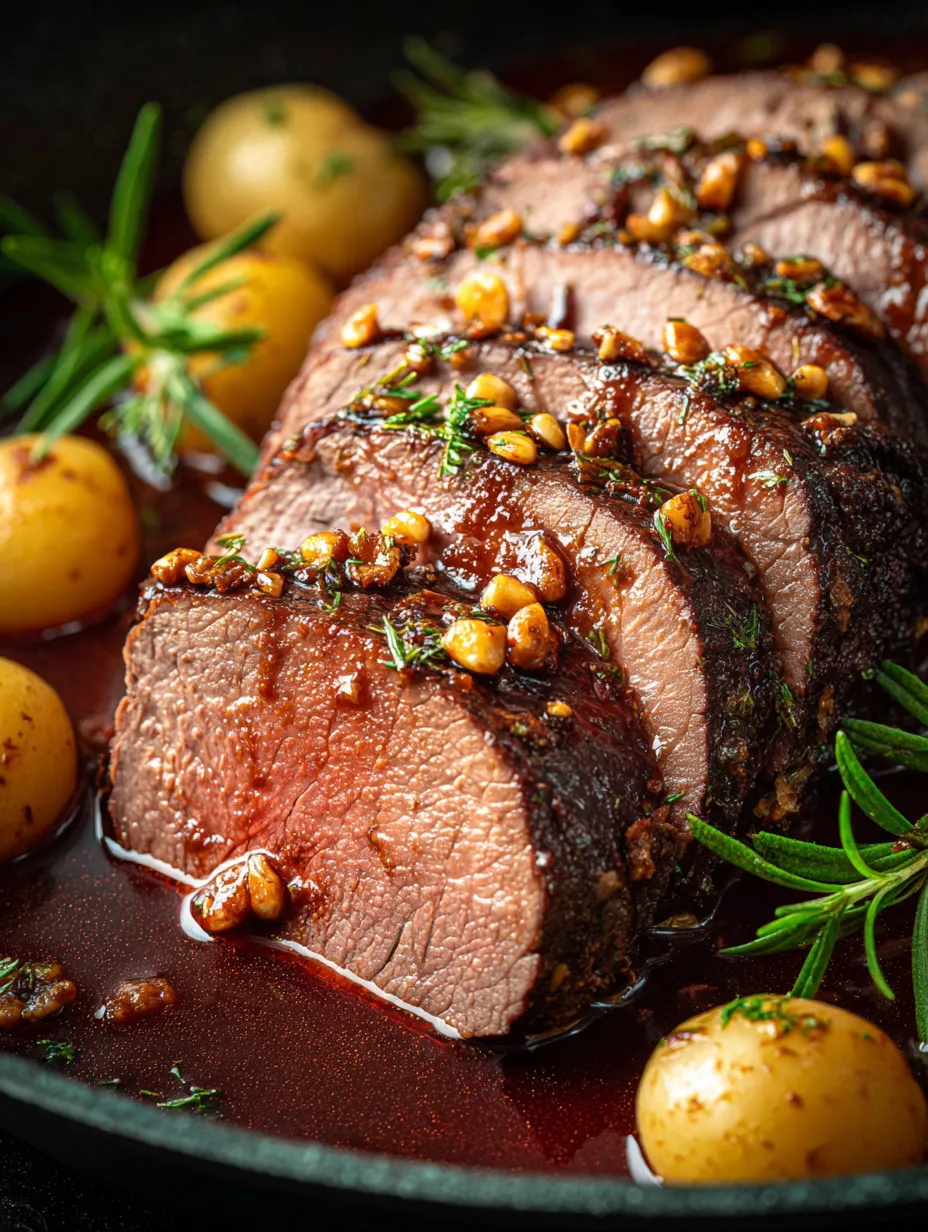 Save
Save
This classic German Sauerbraten transforms an affordable tough cut into fork-tender, tangy perfection after several days in a fragrant marinade and a slow braise. Family gatherings always feel extra special when this dish is on the table the aroma alone brings back memories of Sunday dinners at my grandma’s house.
My family requests this every holiday but I even make it for cozy Sunday meals a few times a year. The first time I finally nailed the sauce I felt as though I had unlocked a generations-old secret.
Ingredients
- Beef bottom round roast: Look for deep red meat with good marbling for extra flavor
- Red wine: Choose a full-bodied type like Cabernet or Pinot Noir for depth
- Red wine vinegar: Use high quality to add bright tanginess and enhance tenderness
- Onion and carrot: These aromatics lay a flavorful foundation in both the marinade and braise
- Celery: Brings balance and classic pot roast sweetness
- Bay leaves: Essential for that signature old-world taste and aroma
- Whole cloves: Infuse warmth and subtle spice
- Juniper berries: Hard to substitute but they offer a distinctive piney note for authenticity
- Black peppercorns: Fresh whole peppercorns give a more complex bite than ground
- Cinnamon stick: Adds warmth that rounds out the sauce
- Salt: Season the marinade generously it helps draw out and distribute flavors
- Gingersnap cookies: Seek out genuine German cookies or Lebkuchen for bold spice and proper thickness in the gravy
- Sour cream: Stirred in for richness and to soften the acidity
- Beef broth: A little goes a long way to round out the sauce
- Butter: For finishing the gravy with glossy silkiness
Step-by-Step Instructions
- Assemble the Marinade:
- Combine red wine vinegar red wine water bay leaves cloves juniper berries peppercorns cinnamon stick onions carrots and celery in a large pot. Bring gently to a simmer just long enough for the spices to infuse and sugar to dissolve if using. Cool completely to avoid prematurely cooking the beef.
- Marinate the Beef:
- Place the beef roast in a deep non reactive glass or ceramic dish. Pour in the cooled marinade and weigh down the roast to submerge if necessary. Cover tightly and refrigerate for four to five days. Turn the roast every twelve to twenty four hours for even flavor penetration.
- Prepare the Roast for Cooking:
- Remove roast from marinade and pat thoroughly dry with paper towels. Strain the marinade reserving both liquid and vegetables. Season the meat all over with salt and pepper.
- Sear the Meat:
- Heat a large Dutch oven or heavy pot over medium high heat. Add a bit of oil then brown the roast deeply on all sides. Take your time with this step it’s crucial for developing flavor.
- Braise the Sauerbraten:
- Add reserved vegetables and strained marinade into the pot with the browned roast. Bring to a gentle simmer then cover and transfer to a three hundred twenty five degree oven. Braise for about two and a half to three hours until the beef is tender all through.
- Make the Gravy:
- Remove roast to a platter and tent loosely with foil. Strain and reserve the braising liquid and discard the vegetables. Skim fat off the liquid and set pot over medium heat to reduce by a third. Whisk in crushed gingersnap cookies and a splash of beef broth simmering until thickened and silky. Finish with butter and a swirl of sour cream for depth and brightness.
- Slice and Serve:
- Cut the roast into thick slices against the grain and lay them in a warm dish. Smother generously in that rich sweet sour gravy and serve with classic sides.

My favorite part is watching the gingersnaps melt into the sauce my kids always sneak a cookie before I finish the gravy just like I did with my mother decades ago at her kitchen table.
Storage Tips
Sauerbraten keeps well for up to four days in the refrigerator. Always store the meat in its sauce to prevent it from drying out. For longer storage freeze portions in airtight containers with plenty of gravy any leftovers make amazing sandwiches or even a hearty filling for pierogi.
Ingredient Substitutions
If you cannot find juniper berries simply use a bit of crushed rosemary for a piney note. For gluten free needs swap traditional gingersnaps for a gluten free brand or even crushed gluten free graham crackers with added spice. Venison or pork shoulder can replace beef for delicious regional versions though adjust marinating time accordingly.

Serving Suggestions
Classic side dishes include German potato dumplings Spätzle egg noodles or simple boiled potatoes to soak up the gravy. Braised red cabbage Rotkohl is the essential sweet and sour contrast and rounds out the plate. For a lighter meal I sometimes serve it with crusty rye bread and a dressed greens salad.
Cultural Context
Sauerbraten bridges centuries of German cooking and was historically a way for resourceful cooks to make tougher cuts shine using long marination. Regional additions like raisins in Rhineland or local wine in Swabia tell the story of local flavors finding their way onto family tables. Every time I cook this dish it connects me back to family roots and German hospitality.
Recipe FAQs
- → Why marinate the meat for several days?
Extended marination helps tenderize tough cuts and infuses the beef with a balanced blend of vinegar, wine, and spice flavors.
- → What cut of beef is best for Sauerbraten?
Beef bottom round roast or similar tough cuts are traditionally used, as the marinade turns them tender and flavorful.
- → What makes the gravy unique?
Crushed gingersnap cookies or lebkuchen are whisked into the cooking liquid, adding body and a sweet-spicy finish distinct to Sauerbraten.
- → How long should the meat marinate?
For best results, marinate the beef for 3–5 days in the refrigerator, rotating it daily to ensure even soaking of flavors.
- → What traditional side dishes pair well?
Classic accompaniments include potato dumplings (Kartoffelklöße), sweet-sour red cabbage (Rotkohl), Spätzle noodles, and sometimes boiled potatoes.
- → Can I use different vinegars or wines?
Authentic flavor calls for red wine vinegar and a robust red wine, but regional styles sometimes use white wine or stronger vinegars for variety.
